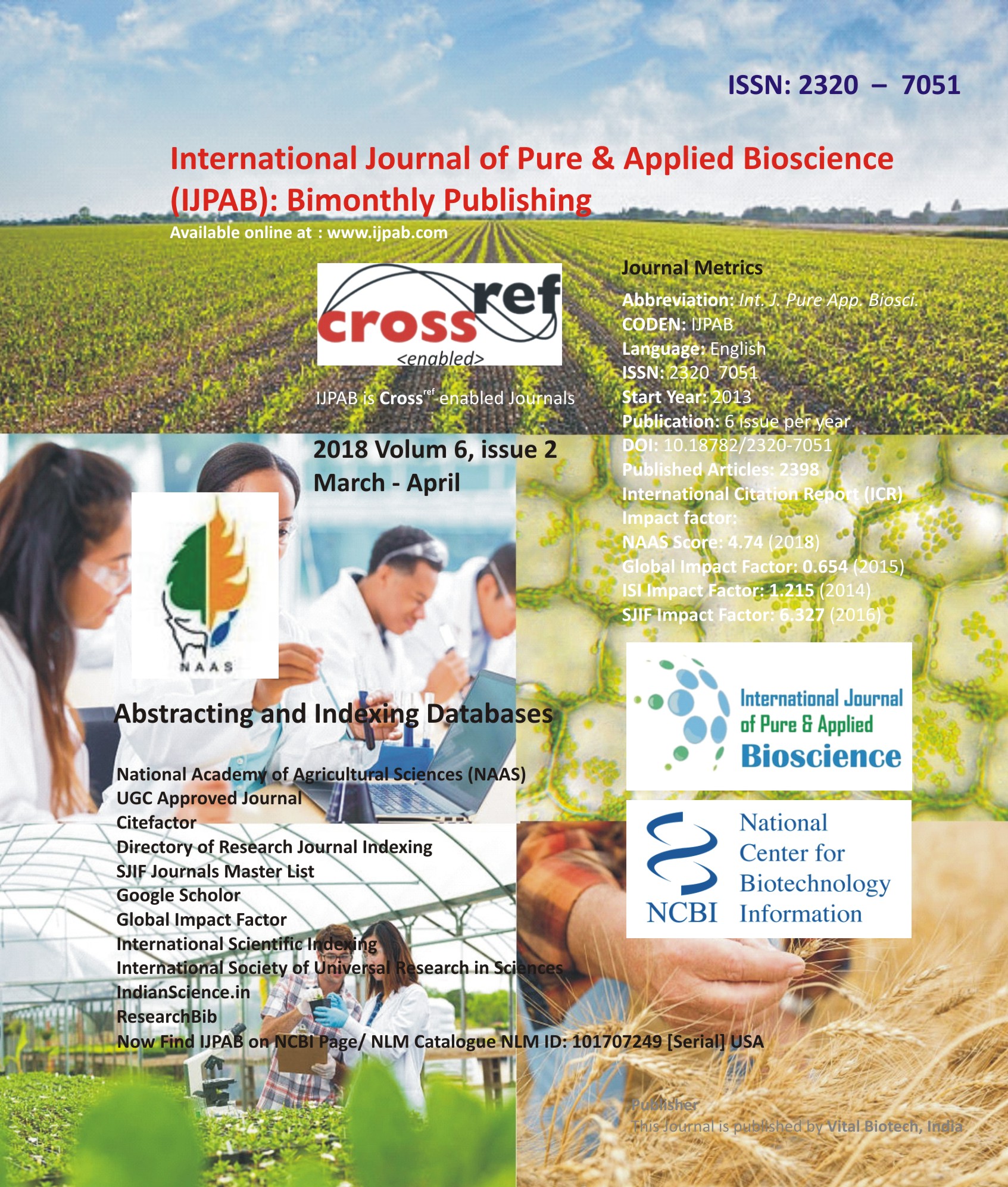
-
No. 772, Basant Vihar, Kota
Rajasthan-324009 India
-
Call Us On
+91 9784677044
-
Mail Us @
editor@ijpab.com
International Journal of Pure & Applied Bioscience (IJPAB)
Year : 2018, Volume : 6, Issue : 2
First page : (1394) Last page : (1400)
Article doi: : http://dx.doi.org/10.18782/2320-7051.6475
Understanding Yield Gaps in Food Grains – A Study on Yield Gaps in Paddy Cultivation
Preethika D. T.1* and Amrutha T. Joshi2
1Research Associate, Institute for Social and Economic Change, Bangalore
2 Professor, University of Agricultural Sciences, Raichur
*Corresponding Author E-mail: pritikaprabhu92@gmail.com
Received: 12.03.2018 | Revised: 17.04.2018 | Accepted: 25.04.2018
ABSTRACT
Production of food grains in India increased considerably since 1960s due to the increase in arable area. The food security of India is, however, now at risk due to increase in population. By 2050, India’s population is expected to grow to 1.60 billion from the current level of 1.10 billion. This implies a greater demand for food. With rice being the most important food of India, its important to improve the productivity levels of rice. Rice is grown on an area of about 43 million hectare in India accounting for about 20 per cent of the total cropped area with the production of 104.32 MT during 2013. It is projected that India needs to produce 115 MT of rice by the year 2020 to maintain the present level of self-sufficiency. The future increase in rice production requires improvement in productivity and productivity efficiency. Yield gap analysis of paddy from Raichur district of Karnataka indicated that the yield realised at the experimental station was 70 quintals per ha and the potential farm yield was found to be 65 quintals per ha with the yield gap of 7.14 per cent (5 q/ha) Among the different categories of farmers, large farmers have realised highest yield of 66.5 quintals per ha followed by medium (64.75 q/ha) and small farmers (63 q/ha). The yield gap appears minimal in the study region as the region is resource abundant. However its crucial to explore yield gaps in paddy, in the other resource constraint regions of the state.
Key words: Food grains, Yield, Food, Paddy
Full Text : PDF; Journal doi : http://dx.doi.org/10.18782
Cite this article: Preethika, D.T. and Joshi, A.T., Understanding Yield Gaps in Food Grains – A Study on Yield Gaps in Paddy Cultivation, Int. J. Pure App. Biosci.6(2): 1394-1400 (2018). doi: http://dx.doi.org/10.18782/2320-7051.6475

